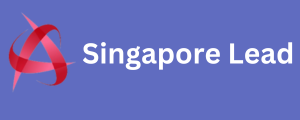Within content marketing, we’ve often used several engagement metrics to understand content engagement: time on page, scroll depth, link or button clicks, and so on. With GA4, there’s a new metric called engagement rate, giving us one holistic metric to summarize user engagement on a page or site. What Is Engagement Rate in GA4 & Why Is It Important? Engagement rate in GA4 is the percentage of engaged sessions on your website or mobile app. Google defines an engaged session as “a session that lasts longer than 10 seconds, has a conversion event, or has at least 2 pageviews or screenviews.” To calculate it, divide the number of engaged sessions by the total number of sessions. Engagement rates help us understand how effectively a page or website captures and retains user interest, which is crucial for measuring content effectiveness and refining content strategy and user experience.
How to Find Engagement Rate in GA4
Engagement rate is also an early indicator of conversions and Brazil Phone Number Data revenue—the more people engage with your page or website, the more likely they are to convert. How to Find Engagement Rate in GA4 Screenshot of GA4 page, highlighting how to find engagement rate You can find engagement rate data using the Acquisition or Engagement reports in GA4. If you don’t see the engagement rate metric within the data table, you will need to customize the report to add it. Engagement Rate vs. While engagement rate measures the quality of user interactions, bounce rate tracks sessions where the user leaves without interacting.
Engagement Rate vs. Bounce Rate
A high engagement rate is a positive sign of compelling content, whereas Belgium Phone Number a high bounce rate can indicate issues with content relevance or site usability. Since the two GA4 metrics are opposites of each other, you can rely on one metric while still understanding the other. However, if you have a pointed question to answer, it may be more suitable to use one metric over the other. For example, “Which content formats or topics drive more engagement?” is better answered using engagement rate.
On the other hand, “Are certain pages less effective in capturing user interest?” is better answered using bounce rate. When to Use Engagement Rate vs. Other Types of Engagement Metrics Use engagement rate for a holistic view of the quality of user interactions with a page or website—it’s most effective when assessing the overall quality of content and user experience. In contrast, other metrics like session duration, time on page, or page views are more suitable for specific insights, such as level of user interest and content depth.

